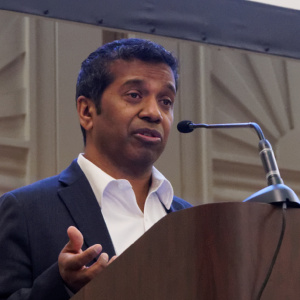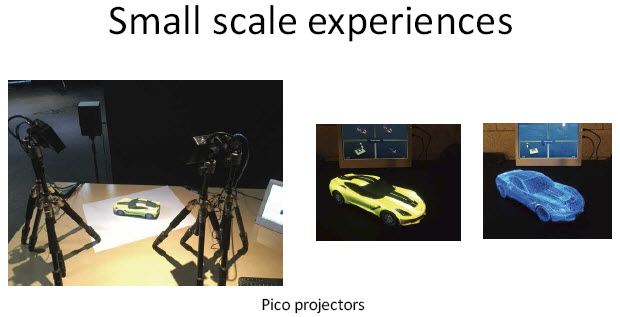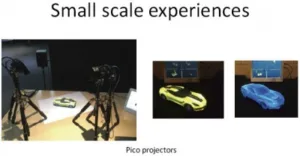
Jeevan Vivegananthan is from Christie and his topic was projection mapping. At the moment this is often used for large events and there are architectural mapping projects as well. Arenas such as basketball courts can be lit up and illuminated. Spaces can be changed also – there are quite a few in bars and casinos in Las Vegas, to transform the space depending on the use or time. Most mapping today is engaging and spectacular and tends to be audience inspiring. It’s also good to show what you can do as an A/V supplier.
However, mapping can be prohibitively expensive – you need a lot of lumens and content creation costs money and takes artistic expertise, so there is a barrier to entry. It can be technically complex as there are good tools, but no really standardised workflow. Sites are often not quite what you thought or were told and you need staff that are technically skilled. Outdoors it’s tricky because you only have limited ‘dark’ time for testing and installation. Unfortunately, projects don’t scale down in cost. Small events may still have the same content costs as large events.
Vivegananthan gave an example of early mapping, where everything was done manually, but now there are tools coming that make mapping more accessible.
- Projectors get smaller, brighter and cheaper
- There has been work to develop templates for a particular space which can make it easier (St Louis Union station).
- 3D printing is becoming ubiquitous and you can make shapes in a single colour, which can then be mapped onto. That’s a new opportunity for mapping
- Working in 3D is becoming more common and 3D objects can be painted in 3D.
Christie created a model with a 3D printer, then used a couple of cameras and some pico projectors to allow simple mapping using structured light to measure the shape.
 Christie showed that 3D mapping onto 3D printed objects is a new opportunity
Christie showed that 3D mapping onto 3D printed objects is a new opportunity
So if it becomes easy, will it be more widely used? Well, good art is still good art and that doesn’t change. However, manual alignment used to be tricky, but is getting automated. If you can work in 3D workflows, the whole process gets easier. Christie has developed a three stage product that it calls Mystique, to allow development, installation and operation of mapping projects. Vivegananthan said that mapping to real world discontinuous 3D objects is very complicated.
There are medical applications – you can project onto organs during operations. Augmented reality is interesting for games and other uses such as architectural. In science, there has been work to display the results from a wind tunnel test to map the air flow onto an object that is under test to make the result clearer.

